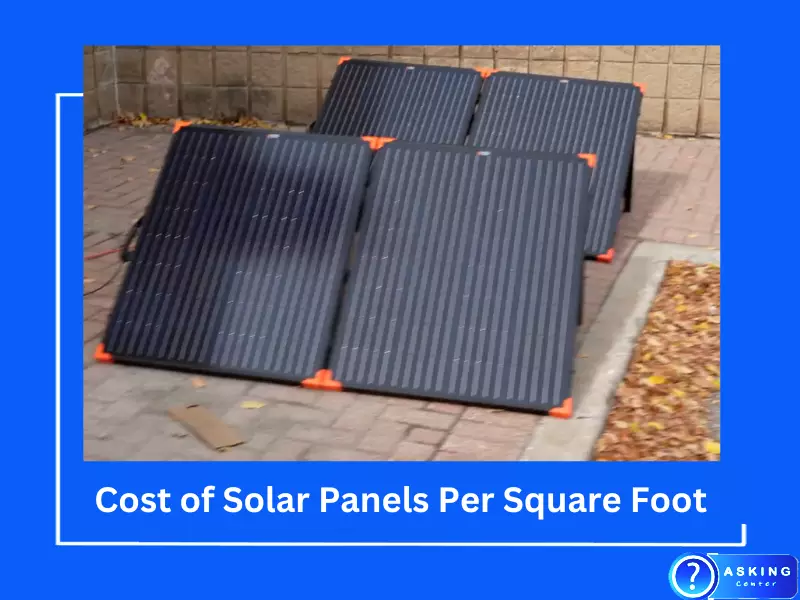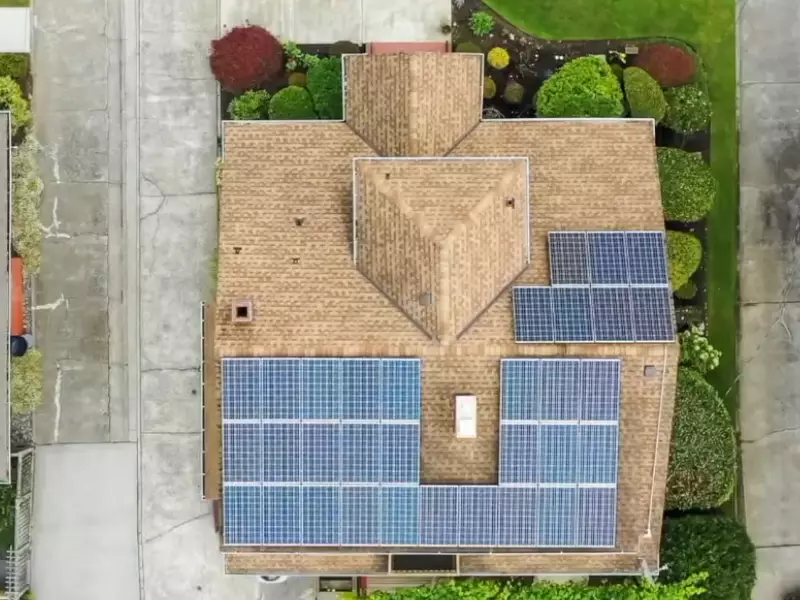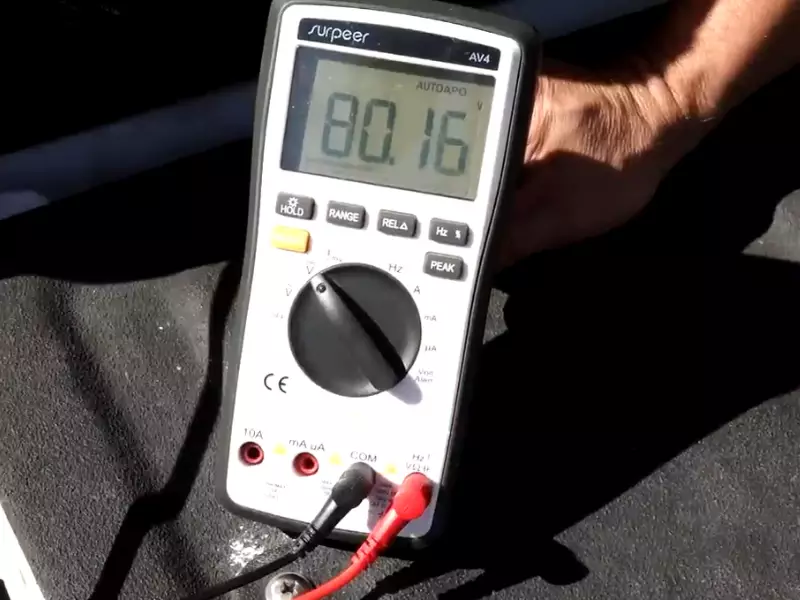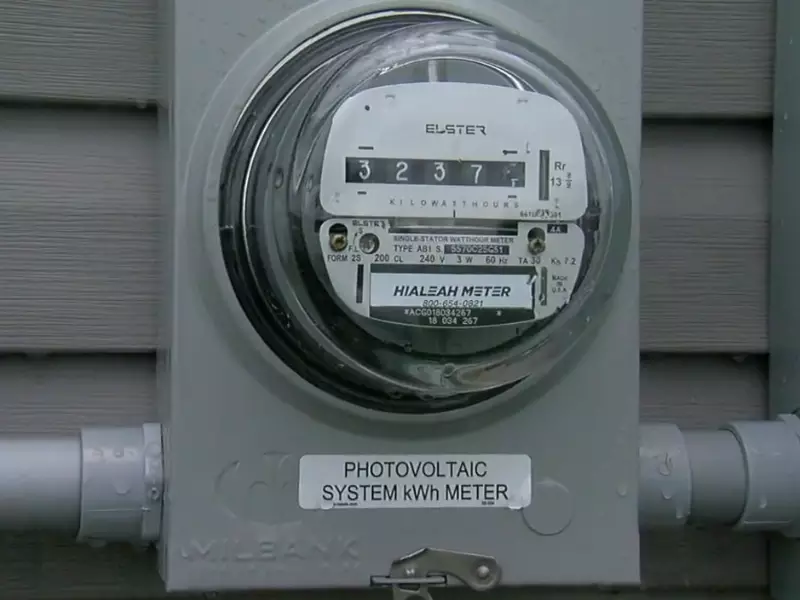Harnessing solar energy offers a sustainable solution to meet our ever-increasing demand for power. Solar panels convert sunlight into usable electricity, making it an eco-friendly and cost-effective energy alternative. Understanding the cost per square foot for solar panels can help homeowners make informed decisions about this significant investment.
Solar panels typically cost between $15 to $25 per square foot, including installation. However, the total cost varies based on several factors, such as the type and quality of solar panels, geographical location, and available sunlight, among other considerations.
As energy prices continue to soar and environmental concerns intensify, solar power presents a promising option for many. This article explores the various factors influencing the cost of solar panels and provides a comprehensive guide on what to expect when considering this green energy solution.
What is a Solar Panel?
Solar panels are devices designed to absorb sunlight and convert it into electricity. This process, known as photovoltaics, involves photons from the sunlight hitting the solar panel and releasing electrons that generate an electric current.
Solar panels come in two primary types: monocrystalline and polycrystalline. Monocrystalline panels are known for their high efficiency and sleek design, while polycrystalline panels are more cost-effective and have a slightly lower efficiency.

Why Consider Solar Panels for Your Home?
Opting for solar panels can significantly reduce your utility bills, while making a positive environmental impact. Solar energy is renewable, reducing dependence on fossil fuels and decreasing greenhouse gas emissions.
Over time, solar panels can offer substantial cost savings, and with the falling prices of solar technology, the upfront investment is more affordable than ever.
Factors That Affect the Cost of Solar Panels
When evaluating the cost of solar panels per square foot, several factors come into play:
- Type of Solar Panel: Monocrystalline panels typically cost more due to their higher efficiency, whereas polycrystalline panels are less expensive.
- Size of the Solar System: Larger systems require more panels, increasing the cost.
- Quality of the Solar Panel: High-quality panels with higher efficiencies and longer lifespans often come at a premium.
- Geographical Location and Availability of Sunlight: Areas with more sunlight hours require fewer panels, potentially reducing costs.
- Installation Costs: These can vary based on the complexity of the installation and the nature of the property.
- Additional System Components: Costs may also include inverters, battery storage systems, and monitoring systems.
Average Cost of Solar Panels
Cost of Solar Panels Per Square Foot
On average, the cost of solar panels ranges from $15 to $25 per square foot, including installation. This average cost, however, can fluctuate based on the factors discussed above.
Cost of Solar Panels Per Square Meter
If you prefer to calculate the cost per square meter, the average cost is approximately $160 to $270. It’s important to note that this figure is a conversion from the cost per square foot and may also vary based on the same factors.
What Affects the Cost of Solar Installations in Your Area?
The cost of solar installations can vary from region to region due to several factors. Local regulations, the cost of electricity, and the amount of sunlight your location receives can all affect the cost. For example, states with high electricity costs and generous incentives often make solar installations more economically viable.
What Costs Are Typically Included?
Solar panel installation involves more than just the cost of the panels. It typically includes site assessment, system design, panels, inverters, mounting hardware, a battery system for off-grid installations, installation labor, and applicable permits and inspections.
Specific Solar Panel Cost for Different House Sizes
The cost of installing solar panels largely depends on the size of your house and energy consumption. Here’s a breakdown:
- Solar Panel Cost for a 1000 Sq Ft Home: Homes of this size typically require a 3kW to 4kW system, costing around $7,500 to $10,000 before incentives and rebates.
- Solar Panel Cost for a 1200 Sq Ft Home: For a slightly larger home, a 4kW to 5kW system would be adequate, with an average cost of $10,000 to $12,500.
- Average Cost of Solar Panels for a 1500 Sq Ft Home: Homes of this size usually require a 5kW to 6kW system, costing around $12,500 to $15,000.
- Solar Panels for a 2000 Sq Ft Home: A 6kW to 8kW system would be ideal for this size of a home, costing approximately $15,000 to $20,000.
- Solar Panel Cost for a 2500 Sq Ft House: For this size, you might need an 8kW to 10kW system, with costs around $20,000 to $25,000.
- Solar Panel Cost for a 3000 Sq Ft House: A house of this size would likely need a 10kW to 12kW system, costing about $25,000 to $30,000.
Remember, these costs are estimates before any rebates or incentives and may vary based on factors such as energy consumption, geographical location, and the type and number of panels used.

How Much Electricity Does a 3000 Square Foot House Use?
On average, a 3000 square foot house might use about 12,000 to 15,000 kilowatt-hours (kWh) per year. However, energy usage can significantly vary based on several factors, including the number of inhabitants, energy-efficiency of appliances, and local climate.
How Much Does a Solar Panel Cost Per Sq Foot in Your Region?
Solar panel costs per square foot can vary by region, mostly due to differences in local installation costs, sunlight availability, and local incentives. For instance, the cost per square foot is often higher in regions with higher labor costs, while generous local incentives can offset these costs.
Kilowatt Guideline Based on Solar Panel System Size
Understanding the kilowatt (kW) requirements for your solar system is crucial in determining your solar panel installation. A typical residential solar panel has an output of around 280-320 watts. To estimate your solar system’s size, consider these steps:
- Understand Your Energy Consumption: Check your electricity bills to determine your annual kWh usage. Let’s say your home uses 10,000 kWh annually.
- Calculate Daily Consumption: Divide your annual consumption by 365 to get daily kWh usage. For the above example, it’s approximately 27 kWh per day.
- Estimate System Size: Divide your daily consumption by the number of peak sunlight hours your location receives. For instance, if your region gets 5 hours of peak sunlight, you’ll need a 5.4 kW system.
Remember, these are estimates and actual kW requirements may vary based on your home’s specific needs and solar panel efficiency.
State Solar Panel Costs and State Credit
Solar panel costs and incentives vary by state due to differences in electricity costs, sunlight availability, and state-level policies. Some states, like California and Arizona, have abundant sunshine and thus lower cost per kWh of solar energy.
Conversely, states with fewer sunshine hours may have higher costs due to the need for more panels. However, they often offer attractive incentives to offset these costs.
State credits also play a significant role in the cost of solar panels. Many states offer Solar Renewable Energy Credits (SRECs), which allow homeowners to sell excess power back to the grid. These credits, combined with the federal solar tax credit, can make solar panel installation financially attractive despite the upfront costs.
Solar Shingles: Cost and Aesthetics
Solar shingles, also known as photovoltaic shingles, are a type of solar technology that doubles as roof material. They provide a streamlined and aesthetic approach to harnessing solar energy and can blend seamlessly with traditional shingles. However, solar shingles tend to be less efficient and more expensive than traditional solar panels.
The cost of solar shingles varies depending on the roof size, complexity of installation, and the brand of solar shingles chosen. They can range from $21 to $25 per square foot, inclusive of installation. While more expensive, their seamless integration into your home’s design might make them an appealing option for many homeowners.

Solar Shingles vs. Solar Panels: Costs and Benefits
Solar energy has become increasingly popular as a renewable energy source, and both solar panels and solar shingles offer options for harnessing the sun’s power. Here, we compare the costs and benefits of solar shingles and solar panels to help you make an informed decision for your home.
Solar Panels
Solar panels, also known as photovoltaic (PV) panels, are the traditional and widely used option for converting sunlight into electricity. Here are the costs and benefits associated with solar panels:
Costs of Solar Panels:
- Equipment and Installation: The cost of solar panels includes the panels themselves, mounting hardware, inverters, and installation labor. On average, solar panels cost between $3 to $5 per watt, depending on factors such as panel efficiency, brand, and installation complexity.
- Roof Reinforcement: In some cases, additional roof reinforcement may be required to accommodate the weight of the panels. This can add to the upfront costs.
- Maintenance: Solar panels generally require minimal maintenance. Occasional cleaning and inspection to ensure optimal performance are recommended.
Benefits of Solar Panels:
- Higher Efficiency: Solar panels tend to have higher efficiency rates compared to solar shingles, meaning they can generate more electricity per square foot.
- Longer Lifespan: Solar panels typically have a longer lifespan, often ranging from 25 to 30 years. They come with warranties that ensure performance for a considerable period.
- Modularity and Scalability: Solar panels are modular, allowing homeowners to add more panels over time to meet increasing energy needs.
- Better Return on Investment (ROI): Due to their higher efficiency and longer lifespan, solar panels generally provide a better ROI over the long term.
Solar Shingles
Solar shingles, also known as building-integrated photovoltaics (BIPV), are designed to resemble and function as regular roof shingles while generating electricity. Here are the costs and benefits associated with solar shingles:
Costs of Solar Shingles:
- Equipment and Installation: Solar shingles tend to be more expensive than traditional solar panels. The cost can range from $21 to $25 per square foot, including installation. The roofing materials and solar technology integrated into the shingles contribute to the higher costs.
- Aesthetics and Design: Solar shingles offer a sleek, integrated appearance, blending seamlessly with the roof’s design. This aesthetic advantage may justify the higher upfront cost for some homeowners.
- Lower Efficiency: Solar shingles generally have lower efficiency rates compared to traditional solar panels. They generate less electricity per square foot, meaning more shingles are needed to meet energy needs.
Benefits of Solar Shingles:
- Aesthetically Pleasing: Solar shingles provide a visually appealing option as they blend into the roof, maintaining the home’s architectural integrity.
- Roof Protection: In addition to generating electricity, solar shingles also function as protective roofing material, shielding the underlying structure from weather elements.
- Space Utilization: Solar shingles maximize space utilization, as they replace traditional roofing materials while generating electricity.
- Incremental Installations: Solar shingles allow for incremental installations, allowing homeowners to install them gradually based on their budget and energy requirements.

Choosing Between Solar Shingles and Solar Panels
When deciding between solar shingles and solar panels, consider the following factors:
- Aesthetics: If maintaining the architectural integrity and visual appeal of your home is crucial, solar shingles may be the preferred choice.
- Efficiency: If maximizing energy generation and achieving the highest ROI are the primary concerns, solar panels are generally more efficient.
- Cost: Solar panels tend to be more cost-effective in terms of upfront investment and long-term savings.
- Roof Condition: The condition and age of your roof may affect the suitability of solar shingles. If your roof requires replacement soon, it may be more practical to install solar panels after the roof replacement.
Types of Solar Panels and their Costs
- Polycrystalline Panels: These panels are cost-effective, making them popular for residential use. However, they are less efficient and require more space. Their cost typically ranges from $15 to $20 per square foot.
- Monocrystalline Panels: These are more efficient but also more expensive, costing about $20 to $25 per square foot.
- Poly vs. Mono Solar Panels: Monocrystalline panels offer higher efficiency and aesthetic appeal, while polycrystalline panels are more affordable.
Polycrystalline Panels and Monocrystalline Panels
When it comes to choosing between polycrystalline and monocrystalline solar panels, there are a few key differences to consider:
- Efficiency: Monocrystalline panels are more efficient due to their cell construction. This means you might need fewer monocrystalline panels to achieve the same energy output, saving space.
- Appearance: Monocrystalline panels have a sleek, uniform look due to the single-crystal structure, while polycrystalline panels have a blueish hue and a more fragmented look.
- Cost: Polycrystalline panels are typically less expensive than monocrystalline panels, making them a popular choice for those with ample roof space and a tight budget.
While polycrystalline panels might be more cost-effective upfront, monocrystalline panels’ higher efficiency and longer lifespan could lead to better savings in the long run. It’s crucial to evaluate your individual needs, budget, and long-term energy goals when deciding between these two options.
How Many Solar Panels Do I Need for a 1500 Sq Ft House?
The number of solar panels you need depends not only on your home’s size but also on your energy consumption, the panel’s wattage, and the number of sunlight hours your area receives. Here is a detailed breakdown:
Energy Consumption
Energy usage varies greatly among households. Your energy consumption may be influenced by factors like the number of residents, energy habits, efficiency of appliances, and more. Check your energy bills to understand your yearly energy usage.
Solar Panel Wattage
Residential solar panels typically range from 250 to 400 watts. Higher wattage panels generate more electricity and may require fewer panels to meet your energy needs.
Sunlight Hours
This is based on your geographical location and the average number of peak sunlight hours. For example, if you live in a region with abundant sunlight, you may need fewer panels than in a region with fewer sunlight hours.
For a 1500 sq ft house, assuming an average energy consumption and using 320-watt panels, you might need around 15-20 solar panels. This is a rough estimate and actual needs can vary.

Government Incentives and Solar Panel Financing
The cost of installing solar panels can be substantially reduced with government incentives. Here’s how:
- Federal Solar Tax Credit (ITC): The U.S. federal government provides a tax credit for solar panel installations. As of 2021, the tax credit stands at 26% of the cost of the system.
- State and Local Incentives: Many states and municipalities offer additional incentives, such as rebates, performance payments, and tax credits.
- Solar Renewable Energy Certificates (SRECs): In some states, you can earn SRECs for the electricity your panels produce, which can be sold to utilities.
Also, many solar companies offer financing options like leases and Power Purchase Agreements (PPAs), allowing you to install solar panels with little to no upfront cost.
How Long Does it Take to Recoup the Investment on Solar Panels?
The payback period for a solar system can vary widely depending on the initial system cost, electricity cost, and how much sunlight your home receives. However, with the falling prices of solar panels and the existence of government incentives, many homeowners find that they can recoup their investment in 7-10 years. To calculate your payback period:
- Determine your system’s total cost after incentives.
- Calculate your annual electricity savings.
- Divide the total cost by the annual savings to get the payback period.
How to Calculate the Cost of Solar Panels for Your Home?
Here are the steps to calculate the cost of installing solar panels in your home:
- Estimate Energy Needs: Look at your electricity bill to determine how many kWh you use annually.
- Determine System Size: Divide your annual consumption by the annual peak sunlight hours in your area and the panel’s output.
- Calculate Cost: Multiply the system size by the cost per watt in your area.
The final cost can vary based on factors like the type of equipment, installation complexity, and any additional upgrades like battery storage or energy monitoring.
Conclusion
While the initial cost of solar panels can seem high, the long-term energy savings, environmental benefits, and potential increase in home value make it a worthwhile investment for many homeowners.
By understanding the various factors that influence the cost and efficiency of solar panels, you can make an informed decision and take a significant step towards energy independence.

